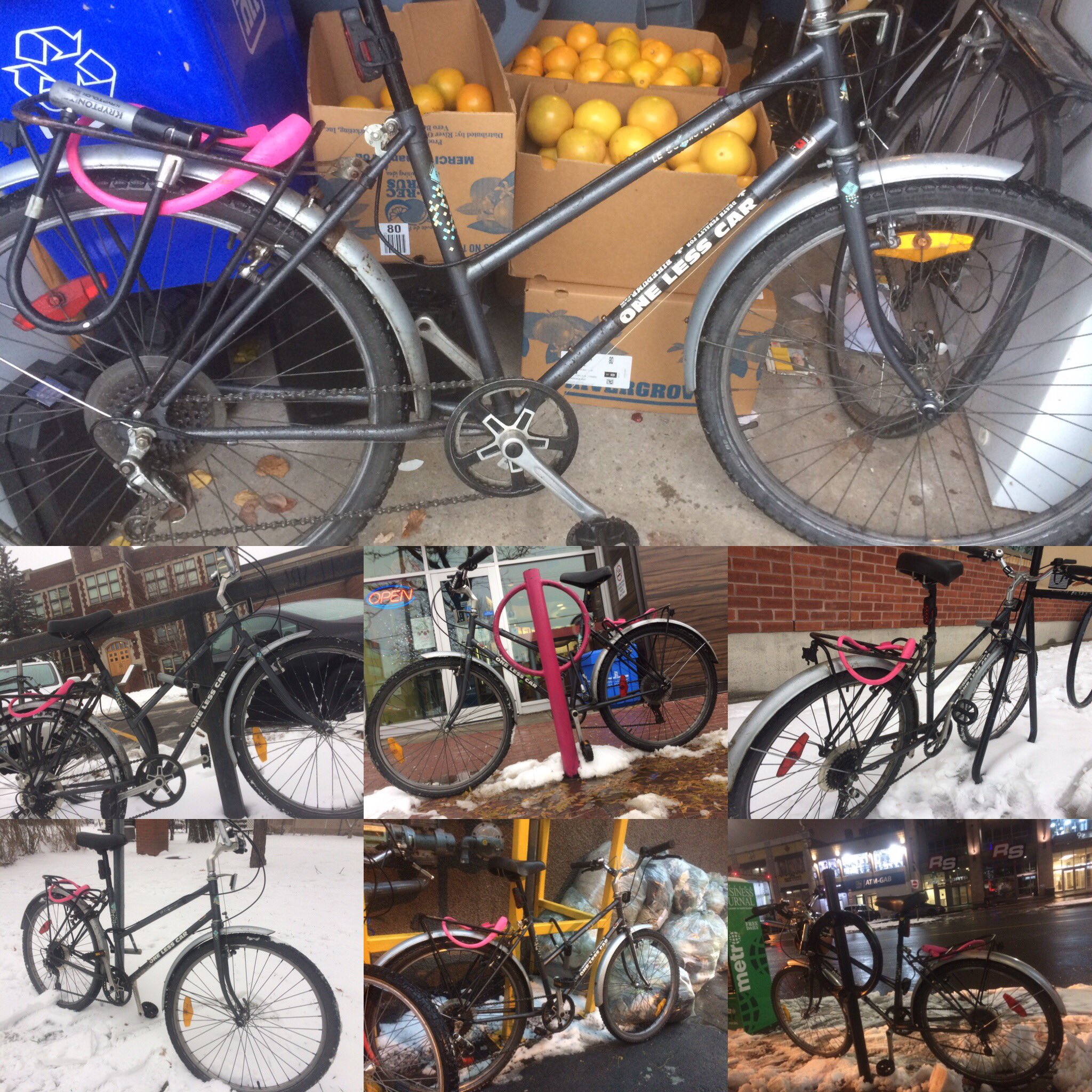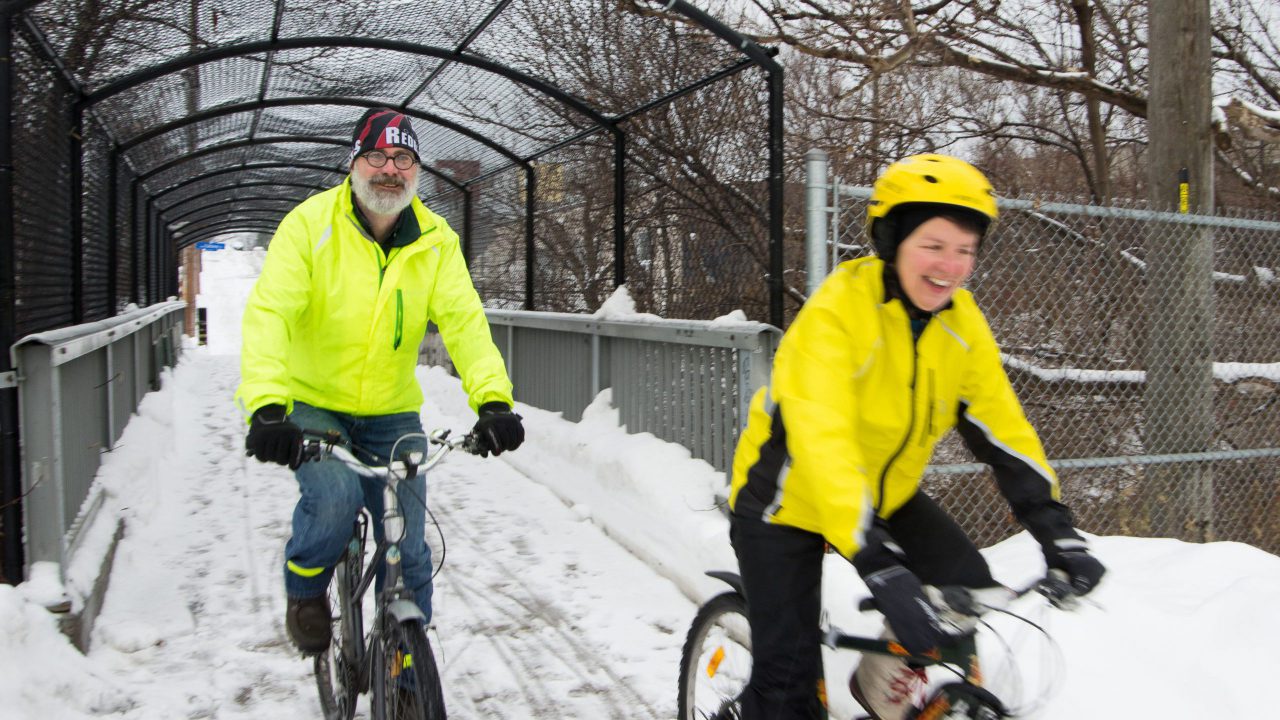In in this second installment of our Winter Cycling Stories Series, Kitchissippi Councillor Jeff Leiper tells us why biking through winter is an efficient way to meet the demands of a busy schedule.
Inspired to tell your own wintter biking story? We’d love to hear it: find out how.
Why did you start cycling through winter?
For the past three years, consistently for the past two, I’ve been getting around for work nearly exclusively by bike all winter. I live on Hamilton Avenue North, and the experience of taking the 14 from City Hall to get home simply became too onerous. In the winter, the buses are uncomfortably crowded and sometimes pass by too full to get on. Furthermore, taking the bus to get to meetings during the day often leaves my schedule with a lot of wasted time. By biking year-round, I’m always in control of my schedule. I love getting to my destination and not having to look for parking, which is in increasingly short supply in the ward. I lock my bike to a pole and go.

Where do you most frequently cycle during the winter?
From my house, my most frequent daily trip is to City Hall. I usually use Somerset Street to get to Bayview, but in the winter switch to much lower-volume Armstrong. It’s quiet and gets excellent plowing. From there, I hook into the winter-cleared paths along Albert, the Nanny Goat Hill connector and Laurier bike lanes. I’m frequently in meetings throughout the ward, sometimes back and forth from downtown a couple of times a day, and am never far from winter-cleared lanes to get around. Most of my meetings in the ward are at community centres and businesses in the neighbourhood, and the roads leading to them are usually excellent. With the new O’Connor lanes, getting to events at Lansdowne has also become a lot safer.
Are there any conditions you WON’T ride in?
A couple of times a year, there’s such a volume of snow in one day that the crews can’t keep the paths cleared. Once there’s more than about 6” of snow on a path, it’s too tough for me to cycle through. Those days are also usually the same on which the traffic is particularly congested and unsafe, so once or twice a year I resign myself to the bus instead of riding. Usually, though, I am never the one who’s late for meetings due to weather!
What kind of bike do you ride, and why did you choose it?
I’ve been using the same used step-through three-speed that I bought at Bike Dump for $175, and on which I spent about $100 to have new studded tires added, as well as a pannier. My bags are completely waterproof. Through the winter, it gets filthy. I add chainsaw oil to the chain to keep it lubed, and do a thorough cleaning in the spring. I chose a used beater since I was told that the salt would destroy it within a season or two, but going on three seasons now I expect it will last another few.
How do you keep out the cold?
The cold didn’t turn out to be as much of a consideration as I thought. I wear just a cycling shell and fleece, and once I get to work am lightly sweating. On very cold days I put a pair of lined splash pants on. My everyday hiker-style winter boots serve me well as cycling footwear. The one piece of gear that changed my ride was lobster mitts. Only my hands really ever got cold, and lobster mitts keep me toasty even on the coldest days. I’m fortunate to be able to grow a very full beard, which keeps my face as warm as I could hope.
What motivates you to continue riding through the winter?
It turned out to be pretty easy to transition to year-round cycling. It takes me a few minutes more per trip than in summer, but it wakes me up. I go a little slower to keep the sweating to a minimum. The key for me was to switch my route to quieter streets. Drivers are less understanding in the winter, and my slower speed more frustrating to them on busy roads. On the plus side, I get a better workout on the heavier bike! If you regularly use bikes for everyday trips, it’s not a huge or expensive switch to make.
Want to hear more from Jeff? Follow him on Twitter @jleiper
Read more about biking through winter, incuding other installments in our winter cycling series
Tell your own winter cycling story: Find the information you need to submit here.

